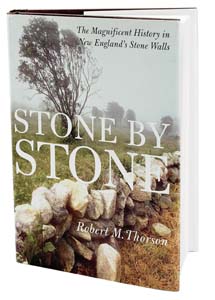Magazine
Stone Wall Defender Robert Thorson
SLIDE SHOW: New England stone walls by William Hubbell, from Good Fences: A Pictorial History of New England’s Stone Walls (Down East Books, 2006; $29.95) When geologist Robert Thorson came to work at the University of Connecticut in 1984, he was smitten by stone walls. In all his travels–from Minnesota to the Pacific Northwest to […]

Coffee By Design | Portland, Maine
Photo Credit : Katherine KeenanYou look like someone who appreciates a good story
- Unlimited access on the web
- Watch episodes online
Already a subscriber? Sign in







